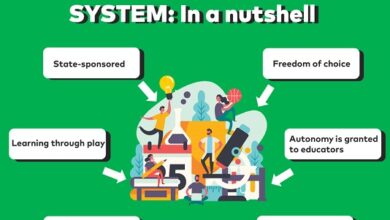Summary of audio-lingual method/guidelines/teacher/student roles
Audiolingual method
This method arose as a product of the communication needs of soldiers during World War II. The entry of the United States into World War II had a significant effect on language teaching in America. In order for the US government to have people who knew German, French, Italian, Chinese, Japanese, Malay, and other languages, and who could work as interpreters and translators, it was necessary to create a special program for language teaching. The government asked American universities to develop foreign language programs for military personnel. In this way, in 1942 the Program for the Specialized Training of the Army began. (Richards and Rodgers, 1988, p. 49). Summary of audio-lingual method
The audio-lingual method is based on linguistic structuralism, which conceives the language as a system composed of different levels: morphosyntactic, phonetic-phonological, and lexical. On the other hand, psychological behaviorism provides the theoretical foundation on how a language is learned: through repetitions that consolidate habits.
The audio-lingual method is deeply permeated by a scientific desire that guarantees the success of the learning process of the target language (from the basic theoretical proposal to the measurable results). Pursue fast and effective learning that involves all four skills; however, it favors oral skills and everyday contexts of use. Summary of audio-lingual method
The role of the teacher is central and active, they are the one who controls the class and models the target language, controls the direction, the pace of learning, checks and corrects the performance of the students. The teacher must keep the students’ attention by varying the exercises and tasks and must choose the most appropriate situations to explain the grammatical structures. The teacher must also use the object language in the language class, introduce, maintain and harmonize the learning of the four skills and direct the response to a chorus of all or some students in the class, etc.
The role of the student is passive, responding to stimuli so they have little decision-making power over content, pace, and learning style. At the beginning they are not asked to interact because that can lead to error, they are asked to recognize, repeat and memorize. At a more advanced level, the student will be able to increase their vocabulary and achieve correction before working on fluency.
Guidelines Summary of audio-lingual method
The direct method is the most widespread of the so-called natural methods.
It was one of the first attempts to build a language teaching methodology based on the observation of the process of acquisition of the mother tongue by children.
At the time of its creation and boom, it constituted a new orientation in language teaching by prioritizing oral language and defending teaching in the target language. It is based on the following principles:
- Exclusive use of the target language.
- Teaching vocabulary and structures for everyday use.
- Inductive teaching of grammar.
- Development of oral communication skills in a progressive and graded way through questions and answers between teachers and students.
- Oral introduction of the new teaching content.
- Use of the demonstration, of objects and drawings in the introduction of the concrete vocabulary, and of the association of ideas in the introduction of the abstract vocabulary.
- The teaching of oral expression and comprehension.
- Emphasis on pronunciation and grammar.
Teacher’s role Summary of audio-lingual method
He is the protagonist of the class. Lead the class and get the students involved. The teacher models the target language controls the direction and pace of learning, checks and corrects the performance of the students. The teacher must maintain the attention of the students by varying the exercises and tasks, and must also choose the most appropriate situations to practice the structures. To execute the linguist plans, you must use the materials and resources specified in the lesson plans, and you must also receive training to enable you to perform your role successfully. (Richards and Rodgers, 1988, p. 61).
Student role
A subject is required to actively participate during the learning process. With this, the person is expected to be able to communicate in everyday contexts, mainly orally. A high level of listening comprehension and articulation of the sounds of the target language is expected; likewise, sufficient knowledge of the most recurrent vocabulary in specific contexts.
Presence of grammar Summary of audio-lingual method
Learning is inductive and dependent on input, continuous practice is encouraged. Among its activities are the repetition of structures, memorization, and simulation of dialogues (to internalize linguistic patterns), question and answer as in Direct but in this case on equivalent models and transferable to variations in the structure. In the development of this method, the materials take on a leading role: they are the ones that make it possible to specify the curricular design.
Activity example
Level: A1
Objective: introduce verbs in the present tense from an image
The following image is presented to the students:
Interactively, the teacher and students establish sentences to describe it. In necessary case,
the teacher must act so that the meaning is understood:
– The family has dinner. Summary of audio-lingual method
– The family dines in the dining room of the house
– The family has four members.
– The man serves dinner to his wife.
Once the phrases are established, the students repeat them several times
